|
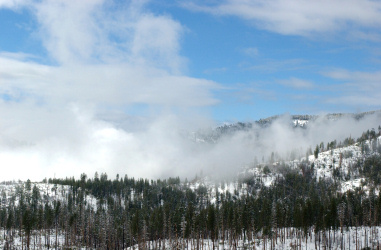 The Making of a Snowflake The Making of a Snowflake
Where do snowflakes come from? The winter clouds, of course.
But how does this all happen? What is going on up there to produce these beautiful ice crystals? |
| 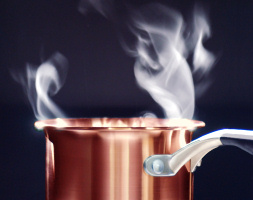 Winter Clouds Winter Clouds
The
first step to making snowflakes is to evaporate some water. When you do
this in a pot on your kitchen stove, the water evaporates into the air
above the pot, where it cools and turns into countless tiny water
droplets. The steam you see above the pot is made of liquid water
droplets; water vapor itself is invisible.
The same thing
happens on a grander scale to form clouds. The sun evaporates water
from lakes, rivers, and oceans, yielding invisible water vapor in the
air. When the air cools down, the water vapor condenses into water
droplets, which are then visible as clouds.
Water is clear, but clouds look white. Snow is white for the same reason. To see why, click here. |
| 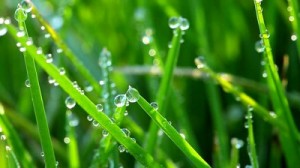 Dust Matters Dust Matters
Water
vapor usually doesn't consense into liquid water unless it has
something to condense onto. When the air cools near the ground in your
backyard, the water often condenses on the grass to form dew. High up
in the atmosphere, the water vapor consenses onto dust particles that
are always present in the air. When you look up at a cloud in the sky,
know that each tiny water droplet contains a speck of dust. When it
rains, the falling water brings the dust down to earth. |
| 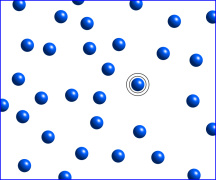 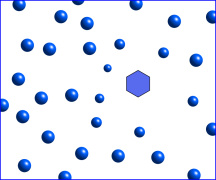 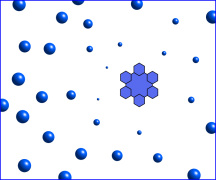 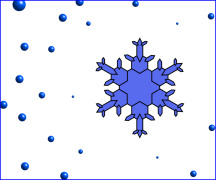
The Birth of a Snowflake
A snowflake is
born when a single cloud droplet freezes. You might think this happens
right at 0 C (32 F), but that's not the case. Before it freezes, water supercools to temperatures below the normal freezing point. As it cools, eventually the dust particle in the water drop nucleates the freezing process. If there is no dust present, very pure water can be cooled to about -40 C (-40 F) before it freezes. |
Once
a droplet freezes, it begins to grow into a snowflake. As it grows, the
ice absorbs water vapor from the air around it. This causes nearby
droplets to evaporate away. The water goes from liquid water (in the
droplets), to water vapor (in the air), to solid water (ice in the
snowflake). Complicated, but that's how it works. It takes about
100,000 evaporated water droplets to make a single snow crystal. |
|
| 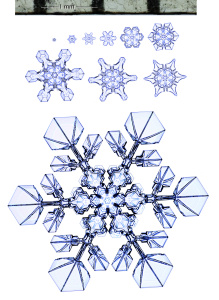 Patterns Emerge Patterns Emerge
A
snowflake takes shape as it floats through the clouds and grows. The
image on the right shows a laboratory-grown snowflake at several
different stages during its formation. Click on the image for a closer
view. The top of the image shows a plastic ruler taken at the same
magnification using the same microscope, with millimeter marks. So
the final snow crystal is about 3.5 mm (0.14 inches) from tip to tip.
The way a snow crystal grows at any given time depends on the temperature and humidity around it, as dicated by the snow crystal morphology diagram. The processes of faceting, branching, and edge sharpening
all affect the final shape of the crystal. It takes about 15-40 minutes
to make a typical snowflake, as it follows the will of the wind through
the clouds. Since no two snowflakes follow exactly the same path, no
two are exactly alike when they reach the ground.
To see some different snowflake types, see the Guide to Snowflakes.
|
|
|
|
